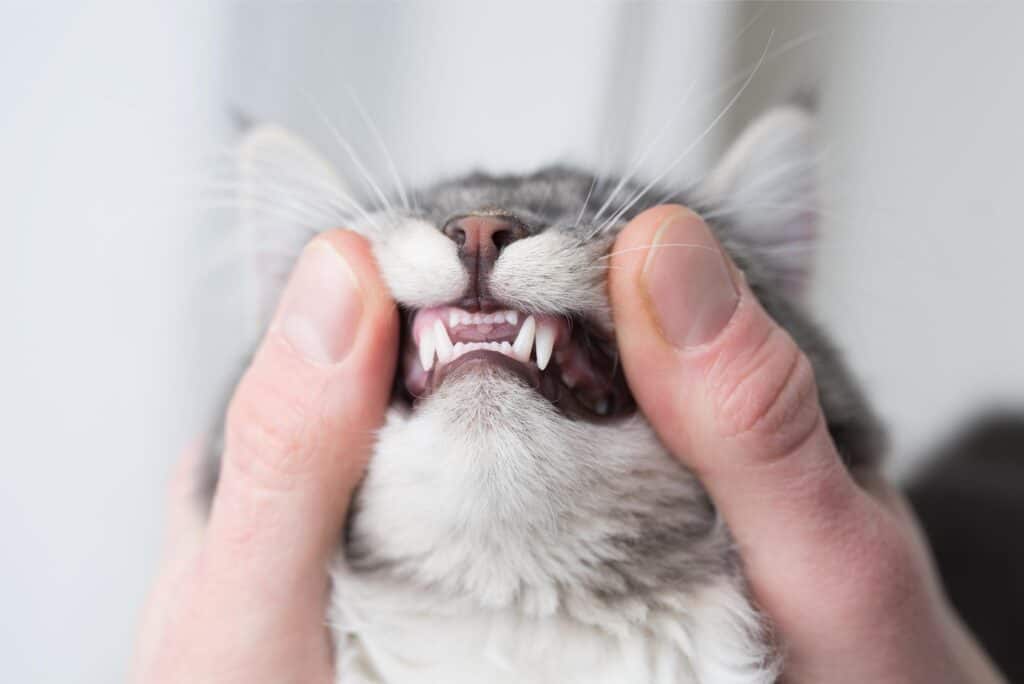Signs of Feline Stomatitis and Gingivitis in Cats
Signs of Feline Stomatitis and Gingivitis in Cats

Most of us know that any word ending in “-itis” usually isn’t good. In fact, the suffix refers to disease characterized by inflammation. Because of the enormous impact that dental health has on the whole body, we emphasize dental cleanings 1-2 times a year. Additional tactics at home, such as daily or weekly brushing, dental chews, or even water additives, can prevent gingivitis and stomatitis in cats.
Swollen and Red
The inflammation of the gums, or gingiva, is known as gingivitis. This is the first stage of periodontal disease (out of four), and the only reversible one. Once the symptoms develop beyond gingivitis, periodontal, or gum, disease is irreversible and progressive.
Gingivitis in cats starts with oral bacteria from food. Over time, this bacteria forms plaque on the surface of the teeth. When the gums are exposed to the plaque, an inflammatory response is launched by the immune system. Left alone, gingivitis can cause the supportive structures around the teeth to recede.
Feline Stomatitis
Stomatitis is characterized by generalized inflammation of the mucous membranes, including the gums, lips, tongue, and even part of the throat. While the exact cause of stomatitis is not fully understood, it may simply be the effect that bacterial plaque has on the tissues in the mouth. The body’s immune system, and possibly the impact of viral infections like feline immunodeficiency virus or feline leukemia virus, can make cats more vulnerable to stomatitis.
Signs for Cat Owners
The most obvious indications of gingivitis are bad breath and redness along the gumline. Swelling and uncharacteristic puffiness may also occur. Tooth brushing can lead to bleeding of the gums.
Because gingivitis and stomatitis can be painful, cat owners may notice a decrease in self-grooming. Difficulty chewing and eating can lead to food avoidance and weight loss.
In addition to assessing the clinical signs, we may conduct a thorough medical history and/or suggest various diagnostics to check for underlying illness. Digital X-rays can help us understand the extent of gingivitis and stomatitis in cats.
Ahead of the Curve
The removal of plaque and tartar is done safely under general anesthesia. Gingivitis symptoms commonly subside after ultrasonic removal of plaque and tartar buildup.
Stomatitis may improve once underlying causes are identified and treated. Regular exams and dental cleanings can prevent gingivitis from ever gaining a foothold, and we can recommend certain at-home care tactics that promote better dental health.
Tooth extractions are common in cats over a certain age. We take every precaution before, during, and after surgery to ensure cat health and safety. Most cats make a full recovery in a short time, and handle tooth loss very well.
Here for Your Cat
Our team at Parkside Animal Hospital is always here to answer questions about your cat’s health, wellness, and behavior. Please call us at (705) 223‑3404.
